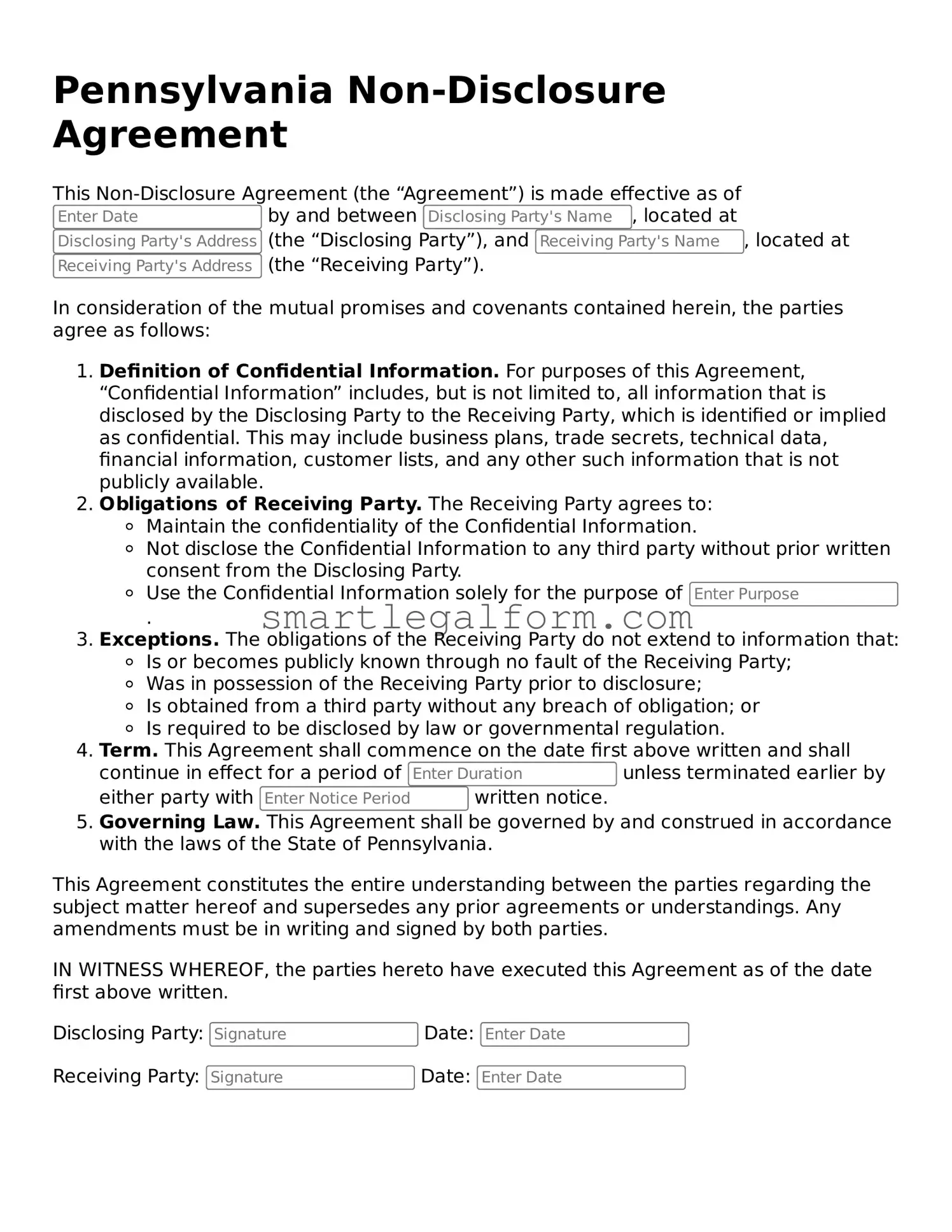When individuals fill out the Pennsylvania Non-disclosure Agreement (NDA) form, they often encounter pitfalls that can lead to misunderstandings or legal issues. One common mistake is failing to clearly define the confidential information. Without a precise description, it becomes challenging to enforce the agreement later. It is essential to specify what constitutes confidential information to avoid ambiguity.
Another frequent error is neglecting to identify the parties involved. An NDA should explicitly state who is bound by the agreement. This includes not just the individuals but also any organizations or entities. Omitting this information can lead to complications if a dispute arises.
People also sometimes overlook the importance of including the duration of the confidentiality obligation. An NDA should specify how long the information must remain confidential. Without this timeframe, parties may have different expectations, which can create confusion down the line.
Many individuals fail to consider the consequences of breaching the agreement. While the NDA may outline the obligations, it should also explain what happens if someone violates the terms. This clarity helps all parties understand the seriousness of the agreement.
Another common mistake is not seeking legal advice before signing the NDA. Legal language can be complex, and having a professional review the document can prevent future issues. A lawyer can help ensure that the agreement is fair and that all necessary elements are included.
People sometimes forget to date the agreement. A date is crucial because it establishes when the terms take effect. Without a date, it can be difficult to determine the timeline for confidentiality obligations.
Additionally, individuals may neglect to include provisions for dispute resolution. An NDA should outline how conflicts will be resolved, whether through mediation, arbitration, or litigation. This foresight can save time and resources if disagreements occur.
Some individuals may also be unaware of the need to update the NDA if circumstances change. As business relationships evolve, so do the terms of confidentiality. Regularly reviewing and updating the agreement ensures that it remains relevant and effective.
Finally, many people underestimate the importance of keeping a copy of the signed NDA. It is crucial to have a record of the agreement for future reference. Losing the document can lead to misunderstandings and disputes that could have been easily avoided.
